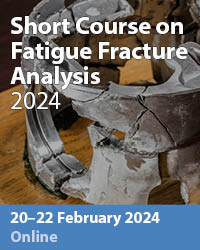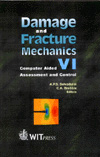Fatigue Crack Growth Mechanisms Of Cast Ti-48Al (at.%) Alloy
Price
Free (open access)
Transaction
Volume
26
Pages
10
Published
2000
Size
1,126 kb
Paper DOI
10.2495/DM000191
Copyright
WIT Press
Author(s)
S. Hamada, A. Nozue & M.N. Tamin
Abstract
Fatigue crack growth mechanisms of cast Ti-48AI (at. %) alloy S. Hamada\ A. Nozue* & M. N. TamirT ^Faculty of Science and Technology, Sophia University, Tokyo, JAPAN. ^Department of Applied Mechanics, Universiti Teknologi Malaysia, MALAYSIA. Abstract Substantial cost reduction for cast TiAl automotive parts could be achieved by eliminating hot isostatic pressing (HIPing) procedure during the material processing. In this respect, a cast Ti-48Al (at %) intermetallic alloy is evaluated in the non-HIPed condition with the objective to establish the fatigue crack growth response and identify the fracture mechanisms. For this purpose, a series of fatigue crack growth tests were performed on the alloy with three different microstructures, with a load ratio, R=0.1, in both air and vacuum environment. Environment effect is manifested in the threshold AK levels of 9.6 and 13 MPaVm for crack growth response in air and vacuum, respectively. In the intermediate range of crack growth rate
Keywords





